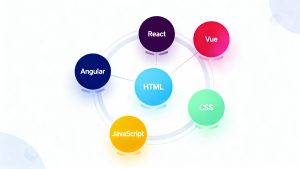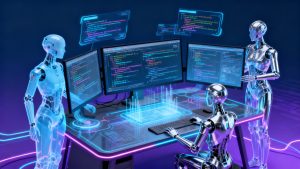Artificial intelligence agents are poised to revolutionize enterprise operations, not simply through advanced models, but by enabling autonomous problem-solving, adaptive workflows, and scalable integration. The main challenge facing organizations is not the sophistication of AI models, but the infrastructure that supports seamless data access, interoperability, and real-time collaboration across systems. This challenge is best addressed through event-driven architecture (EDA), which leverages continuous data streams to empower agents and unlock their full potential.
The Limitations of Traditional AI and the Rise of Agentic Systems
While AI has advanced rapidly, the industry is encountering the boundaries of fixed workflows and even large language models (LLMs). Leading platforms, such as Google’s Gemini and OpenAI’s Orion, have struggled to meet internal expectations despite larger datasets and improved models. Industry leaders, including Salesforce’s Marc Benioff, have noted that the future lies not in larger models, but in autonomous agents-systems capable of independent reasoning, adaptation, and action.
Dynamic Workflows: From Programmatic to Agentic Logic
Agentic AI introduces dynamic, context-driven workflows that adapt in real time. Unlike traditional, rigid programs, agents leverage LLMs to make decisions, utilize tools, and access memory on the fly. This flexibility allows agents to address unpredictable and interconnected business challenges far more effectively than static logic could.
Architectural Challenges in Scaling Intelligent Agents
Scaling agentic systems requires more than simply connecting agents to tools and data. The real complexity lies in distributed systems design, similar to the evolution from monolithic applications to microservices. Agents must communicate efficiently, ensuring their outputs are accessible to multiple consumers, including other agents and critical business platforms like CRMs and data warehouses.
Direct connections via APIs or RPCs result in tightly coupled systems, which are difficult to scale and adapt. Instead, agents require a loosely coupled approach, where outputs can flow freely to other agents, services, and platforms without rigid dependencies.
Event-Driven Architecture: The Backbone of Modern Agentic Systems
Early software systems were monolithic and became unmanageable as they grew. Microservices improved scalability by breaking applications into smaller components, but introduced new challenges in service-to-service communication. Direct connections created webs of dependencies, making systems brittle and prone to cascading failures.
EDA resolves these issues by enabling asynchronous, event-based communication. Services and agents react to events in real time, increasing resilience and adaptability. This approach has proven essential for managing the complexity of modern workflows and supporting rapid innovation.
Lessons from Social Networks: The Importance of Scalable Infrastructure
The trajectory of early social networks, such as Friendster and Facebook, highlights the importance of scalable architecture. Friendster’s inability to handle rapid growth led to its demise, while Facebook’s investment in robust infrastructure enabled it to thrive. Similarly, AI agents will experience rapid adoption, and only those built on scalable, event-driven foundations will succeed in the long term.
Agents as Microservices: Managing Informational Dependencies
AI agents share similarities with microservices-they are autonomous, decoupled, and independently capable. However, agents go further by relying on context-rich information to reason and collaborate. This demands systems that support real-time data sharing and fluid collaboration without rigid dependencies.
EDA acts as a “central nervous system,” allowing agents to broadcast events asynchronously. This ensures information flows dynamically, enabling agents to operate autonomously while integrating seamlessly with broader workflows and systems.
Maintaining Context While Achieving Decoupling
Flexible, event-driven systems avoid the pitfalls of traditional, tightly coupled designs. By decoupling workflows and enabling asynchronous communication, EDA allows different layers-agents, data sources, tools, and applications-to function independently. This means that updates and innovations in one part of the stack do not disrupt the entire system, accelerating delivery and adaptation.
Scaling Agents with Real-Time Event Streaming
Platforms like Apache Kafka exemplify the benefits of EDA for agentic systems:
- Horizontal Scalability: Distributed design supports seamless addition of new agents or consumers.
- Low Latency: Real-time event processing ensures instant responses and reliable workflows.
- Loose Coupling: Communication through topics, not direct dependencies, keeps agents independent.
- Event Persistence: Durable message storage guarantees data reliability.
Agents become both producers and consumers of events on a real-time streaming platform, enabling continuous data flow and efficient decision-making across the enterprise.
Integrating Standards: Model Context Protocol (MCP) and EDA
Frameworks like Anthropic’s Model Context Protocol (MCP) provide universal standards for integrating AI with external tools and data sources. MCP, combined with EDA, ensures secure, seamless access to up-to-date information, reducing development effort and enabling context-aware decision-making. EDA addresses MCP’s requirements for real-time responsiveness, scalability, and seamless integration.
Conclusion: Event-Driven Agents Will Define the Future of AI
As AI continues to evolve, so must the architectures that support it. Survey data shows that nearly half of senior IT leaders are ready to integrate AI agents into operations, highlighting the demand for scalable, flexible systems. EDA is the foundation for building agent systems that are resilient, adaptable, and capable of integrating into complex enterprise ecosystems.
Organizations that embrace event-driven architecture will gain a significant competitive advantage in the era of autonomous AI agents, while those that cling to rigid, tightly coupled systems risk falling behind. The future of AI is event-driven, and the time to invest in scalable, flexible infrastructure is now.
Read more such articles from our Newsletter here.



